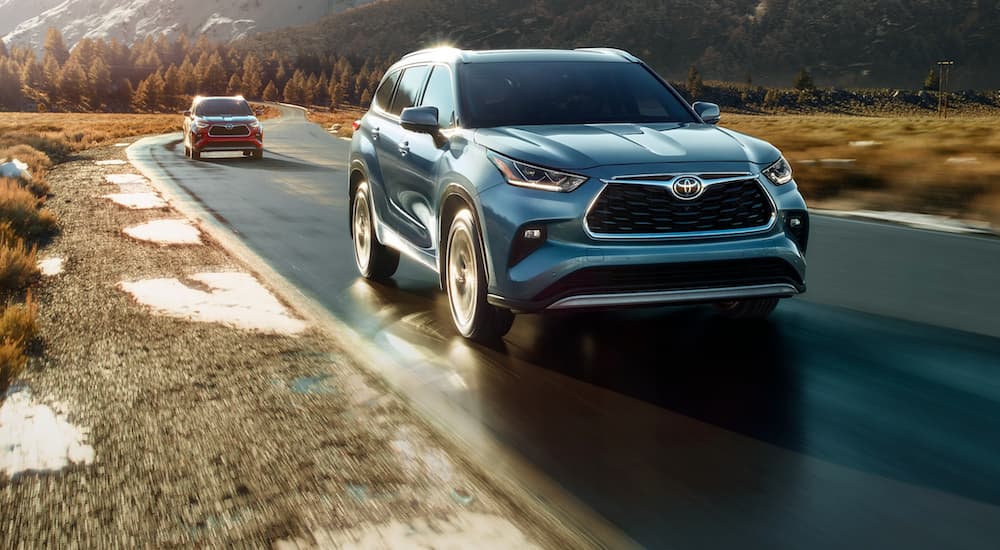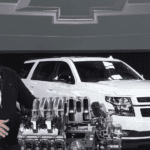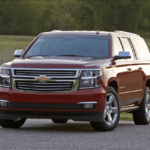Think about how much trust you put in a dealership to be transparent about their vehicles and give you the best deal. A reputable used SUV dealer is instrumental in helping you find the perfect model that fits your budget and meets your driving needs. However, if you want to trust your purchase, some of the work falls on your shoulders as well.
Buying a used vehicle was once incredibly risky because you never quite knew what you were getting. People without mechanical knowledge had to take their word for it from a dealer or private seller or invest in a pre-sale inspection. Even then, there was no guarantee of a car’s maintenance or ownership history. Fortunately, the industry has moved on and buying a used SUV is now less risky, thanks to vehicle history reports and regulations requiring dealers to operate transparently. These advances, however, only go so far.
As the buyer, you are responsible for inspecting the vehicle prior to sale. You can use vehicle history reports and other information provided by the dealer to enhance and add to your research, but ultimately choosing the right used SUV rests on your shoulders. However, contrary to popular belief, you don’t need to be mechanically inclined or have decades of experience in the automotive industry. All you have to do is trust your senses to determine if the investment is worth it.

Things to look for
Once you find a used SUV, your first job is to visually inspect the model. While this sounds simple, it requires more than a brisk walk around the vehicle. A thorough inspection can reveal several problems if you know what to look for and where.
Dents, scratches and scuffs
It is common to find dents, dings and scratches on a used vehicle. However, you never want to discover a major cosmetic issue after making the purchase. Inspect the vehicle carefully before you buy it and make sure any exterior damage is appropriate for its age and price. Don’t forget to consider cracks or chips in your windshield, as they can be expensive to repair down the road.
Paint defects
Paint defects are a telltale sign of damage, neglect or careless repairs. For example, every panel on the vehicle should have the same paint color and finish. Similarly, there should be no excess paint on the wheel wells, the bottom of the doors or the seals around the boot, hood or doors. If a car looks like it’s been repainted, ask the dealer what they know.
rust
Rust is harmful to a vehicle, so knowing where to look and how to spot it is critical. Some of the most common rust spots are wheel wells, the exhaust, the bottom of the door panels, and other metal body components. In some cases, the rust can be camouflaged with the paint job, so it is essential to look for blister paint in these areas.
Water damage
Like rust, water damage can be costly if you don’t catch it early on a vehicle. You can check the interior of your car, truck, or SUV for water damage in several areas. First, inspect the head and trim for leaks and sagging areas. Next, look inside the trunk or rear cargo area for water stains. Finally, stretch the seat belts as far as possible to see if there is a visible watermark or discoloration, checking their manufacture date against the vehicle’s model year. A newer seat belt on an older model indicates a potential problem.
Dashboard errors
Turn on the ignition from the driver’s seat but do not start the engine. Instead, pay close attention to the instrument panel, watching for any warning lights that come on. For example, a check engine light should never be ignored. If it’s a newer digital display, scroll through the display to see if everything is working, such as the tire pressure monitoring system, oil life indicator, and other useful features.
Things to listen to
It’s easy to get distracted during a test drive, especially when it’s an SUV you’ve always dreamed of owning. Suddenly you’re in the driver’s seat, chatting with the salesperson and paying little attention to anything beyond the conversation and the traffic. However, this is one of the most critical aspects of buying a vehicle and requires your full attention.
Engine noises
It seems obvious, but remember to sit in the vehicle with the engine idling before pulling out of the parking lot for your test drive. Pay close attention to how it sounds and whether the engine is easy to start. Then, when you start driving, notice any unusual noises when you speed up or down. Do it without any distractions, like the radio, so you can fully focus on what you’re listening to.
Sound system quality
Once you’ve listened closely to the engine, check out the vehicle’s sound system and connectivity features. You can do this from the safety of the dealership lot, so you won’t be distracted by traffic or anything else. Check out the radio system, smartphone integration features like Apple CarPlay and Android Auto, navigation tools and in-vehicle apps. Also, make sure your sound system and speakers are working properly.

Things to feel
Many people buy vehicles based on how they feel. For example, someone looking for speed wants a car that performs exceptionally well when pushed to the speed limit and hugs the curves of every winding road. It’s natural to want a vehicle that handles well and feels good on the road, but there’s more to the feel than that.
Worn out seats
As you inspect the vehicle, think about how you feel in the seats. Are the seats offering maximum comfort or are they worn in areas such as the lower back, where support is critical to reduce fatigue? Sit in every seat in the SUV, even if you spend most of your time behind the wheel. Test any features and inspect the upholstery for imperfections, tears or stains that need refinishing.
wet carpet
Water damage isn’t always visible as stains on carpets or a fallen headboard. Sometimes you can rely on your sense of touch for problem areas. Carpet that feels wet is a telltale indicator of recent water damage, which can ultimately lead to rust and other costly expenses.
Things to smell
The new car smell is enticing and shows how important it is for buyers to use their sense of smell when shopping for their next vehicle. As you inspect a used SUV, pay close attention to unusual odors, such as moisture, mold, mildew, or smoke. An SUV that smells musty probably has water damage, while a strong sour smell indicates that the previous owner was a smoker. In any case, these odors are difficult to eliminate.
The common sense approach
Common sense is one of the most important senses to rely on when looking for the perfect used SUV. As the buyer, you are responsible for gathering the necessary information and doing your homework before the sale. The vehicle inspection is only the beginning of the process. Once you’re happy with what you see, it’s time to dig deeper and find the Vehicle Identification Number (VIN). The VIN gives you access to the vehicle’s history report and helps you gauge the car’s value in today’s market. With this information and after using all your senses, you can negotiate a fair price and close the sale with confidence.






